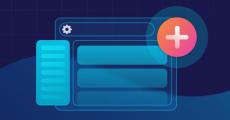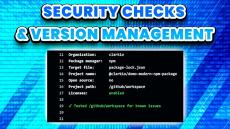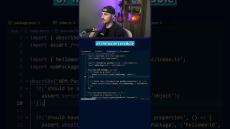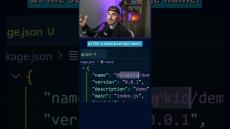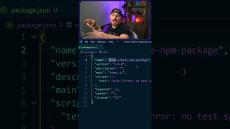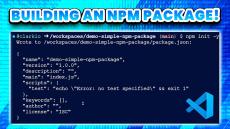|
By Daniel Berman
Together, Snyk and Google Cloud enable modern security practices that unify cloud and application security efforts. This collaboration simplifies risk management for CISOs, providing a cohesive strategy to protect cloud-native environments and the applications running within them. Security leaders often struggle with fragmented tools that create silos between cloud security and application security teams.
|
By Brian Vermeer
The software bill of materials (SBOM) is quickly becoming an essential aspect of open source security and compliance. In this post, we'll delve into what SBOMs are, why they're necessary, and their role in open source security.
|
By Ben Desjardins
It’s been over a decade since DevSecOps was introduced as a transformative approach to software development, but adoption remains uneven. Despite its promise of seamless integration between development, security, and operations, only 38% of organizations report fully automating the addition of new projects, branches, or repositories into their security testing queues.
|
By Ben Desjardins
The Cyber Resilience Act (CRA) introduces a much-needed framework for standardizing the cybersecurity practices of companies operating in the European Union (EU). The regulation sets clear expectations for hardware and software manufacturers, developers, and distributors, outlining how they should manage and address vulnerabilities at every stage of the product lifecycle.
Featured Post
There are always new ways to fall foul of a data breach, but some are easier to avoid than others. Be smart to stay secure.
|
By Danny Allan
Snyk’s Security Labs team aims to find and help mitigate vulnerabilities in software used by developers around the world, with an overarching goal to improve the state of software security. We do this by targeting tools developers are using, including new and popular software solutions. With the meteoric rise in AI tooling – specifically the fast-growing field of AI-enabled development environments – we have been including such software in our research cycles.
|
By Ken Mellert
Snyk is the trusted partner for financial services companies, empowering them to modernize application security while safeguarding critical infrastructure. Backed by industry leaders, we are committed to exceeding expectations, driving innovation, and redefining security for financial services. This is one of the reasons Snyk was recently inducted into JPMorgan Chase’s Hall of Innovation, for our central role in helping them to build the future of banking securely.
|
By Liqian Lim ()
From design to deployment, the rise in AI tools and AI-generated code is changing developers’ workflows, enabling them to focus on more creative and complex tasks. However, while 96% of developers use AI coding assistants to streamline their work, it can have a negative impact on security teams. One-fifth of AppSec teams surveyed said they face significant challenges securing AI-generated code due to how quickly it’s produced.
|
By Liran Tal
Docker security refers to the build, runtime, and orchestration aspects of Docker containers. It includes the Dockerfile security aspects of Docker base images, as well as the Docker container security runtime aspects—such as user privileges, Docker daemon, proper CPU controls for a container, and further concerns around the orchestration of Docker containers at scale. The state of Docker container security unfolds into 4 main Docker security issues.
|
By Hiroko Nakano
On November 12th, 2024, at the Pavilion Hotel in Kuala Lumpur, Snyk’s Field CTO, Pas Apicella, delivered an insightful presentation at the Digital Banking Asia Summit 2024 in Malaysia. Titled, ‘Securing the Digital Future: Best Practices for Application Security in Digital Banking’, his talk focused on actionable strategies to address pressing challenges in the financial services industry.
|
By Snyk
In this video, we will be stepping through how to do security checks for your npm package as well as version management and publishing.
|
By Snyk
Need help building your production ready npm package? Look no further! We go through a step by step guide showing you how to build, test and publish your npm package. If you haven't watched Part 1 yet, go watch that first, and then come back to Part 2!
|
By Snyk
Watch the full video linked below for more...
|
By Snyk
Watch the full video linked below for more...
|
By Snyk
In this video, we’ll walk you through the process of creating a modern npm package from scratch. Whether you're a seasoned developer or just starting out, this step-by-step guide will show you how to build, test, and publish an npm package.
|
By Snyk
This book will help both development and application security architects and practitioners address the risk of vulnerable open source libraries and discuss why such vulnerable dependencies are the most likely to be exploited by attackers.
|
By Snyk
Forrester conducted a customer study to get insights into why organizations choose Snyk to help them tackle and implement developer-first security. Read the report to dive into the benefits, cost and value ROI for Snyk.
|
By Snyk
This book reviews how the serverless paradigm affects the security of an application, and dives into the benefits it brings.
|
By Snyk
Snyk's annual State of Open Source Security Report 2020 is here. Download it now to learn how Open Source security is evolving.
|
By Snyk
"Shift left" has become the holy grail for security teams today but organizations are still struggling to successfully implement some of the key processes that shifting security left entails. A new study sponsored by Snyk and conducted by Enterprise Strategy Group (ESG) has found that while developers are indeed being given more responsibility for testing their applications for security issues, they simply don't have the knowledge or right set of tools to do so.
|
By Snyk
81% of security and development professionals believe developers are responsible for open source security - but many organizations are still unsure how to start building a culture and practice of DevSecOps. Puppet & Snyk's study is digging deeper into the trends of DevSecOps adoption.
|
By Snyk
The 2020 Gartner Market Guide for SCA is here! Recent Gartner survey finds that over 90% of organizations leverage OSS in application development - and as a result, security of open source packages was the highest ranked concern for respondents. These concerns have led to a growing market, addressed by various vendors for SCA tools that mitigate the risk of OSS. New trends emerge with devops on the rise - as the market shifts towards developer-friendly SCA tools.
- February 2025 (5)
- January 2025 (25)
- December 2024 (32)
- November 2024 (19)
- October 2024 (37)
- September 2024 (32)
- August 2024 (34)
- July 2024 (32)
- June 2024 (34)
- May 2024 (35)
- April 2024 (29)
- March 2024 (11)
- February 2024 (13)
- January 2024 (21)
- December 2023 (20)
- November 2023 (31)
- October 2023 (29)
- September 2023 (13)
- August 2023 (25)
- July 2023 (17)
- June 2023 (31)
- May 2023 (23)
- April 2023 (20)
- March 2023 (24)
- February 2023 (21)
- January 2023 (18)
- December 2022 (22)
- November 2022 (33)
- October 2022 (40)
- September 2022 (36)
- August 2022 (36)
- July 2022 (18)
- June 2022 (22)
- May 2022 (25)
- April 2022 (31)
- March 2022 (43)
- February 2022 (30)
- January 2022 (28)
- December 2021 (44)
- November 2021 (27)
- October 2021 (26)
- September 2021 (27)
- August 2021 (20)
- July 2021 (19)
- June 2021 (23)
- May 2021 (29)
- April 2021 (22)
- March 2021 (33)
- February 2021 (12)
- January 2021 (13)
- December 2020 (2)
Snyk is an open source security platform designed to help software-driven businesses enhance developer security. Snyk's dependency scanner makes it the only solution that seamlessly and proactively finds, prioritizes and fixes vulnerabilities and license violations in open source dependencies and container images.
Security Across the Cloud Native Application Stack:
- Open Source Security: Automatically find, prioritize and fix vulnerabilities in your open source dependencies throughout your development process.
- Code Security: Find and fix vulnerabilities in your application code in real-time during the development process.
- Container Security Find and automatically fix vulnerabilities in your containers at every point in the container lifecycle.
- Infrastructure as Code Security Find and fix Kubernetes and Terraform infrastructure as code issues while in development.
Develop Fast. Stay Secure.



